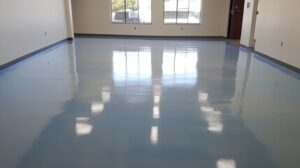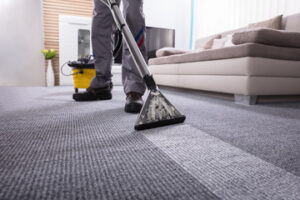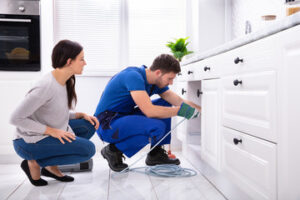The term SEO is often used in digital marketing circles. It is a critical component of online marketing, and it can be challenging to implement.
It involves several processes, including keyword research, on-site optimization, and link building. To improve your search engine optimization, it is important to follow best practices and keep up with the latest trends. Click here to learn more.

Keyword research is the process of discovering what people are searching for on search engines. It is an important part of SEO (search engine optimization), and it helps website owners create content that will be more likely to rank higher in search results. This, in turn, will increase the number of organic search traffic and sales.
A good way to start with keyword research is to put yourself in the shoes of your audience. Think about what they would type into a search engine if they were looking for your products or services. This will help you come up with a list of keywords to target. Then, you can use a tool like Google AdWords to find out how popular these words are and whether or not they’re relevant to your business.
You can also determine the level of competition by looking at the number of backlinks and Facebook shares a website has for that particular keyword. These factors will indicate how difficult it is to rank for that specific keyword. However, keep in mind that a high ranking doesn’t necessarily mean that it will drive traffic and conversions. It’s important to analyze the performance of each keyword and how it relates to your audience’s needs and expectations.
Another important aspect of keyword research is to consider the intent behind each phrase. If a user is searching for short-tail keywords, it’s likely that they are conducting preliminary research and don’t have buyer intent yet. Long-tail keywords, on the other hand, have a more specific meaning and are more likely to attract a qualified audience that is ready to purchase your product or service.
To determine the intention of a particular search term, it’s helpful to use a tool like Answer the Public to get an idea of what questions are being asked around the topic. This information can then be used to optimize existing pages on your site or create new ones.
Keyword research reveals a plethora of valuable insights on your competitors and what kind of content to create. It’s crucial to your SEO strategy and should be an integral part of any marketing campaign.
On-page optimization
SEO is a crucial part of any business’s online marketing strategy, and on-page optimization is an essential aspect. It involves optimizing the content of your web pages to improve their rankings and visibility in search engine results pages (SERPs). On-page optimization includes a variety of factors, including keyword research, page speed, and mobile friendliness. It also involves optimizing images and ensuring that your website is easy to navigate on all devices.
On-page SEO is distinct from off-page SEO, which focuses on optimizing parts of your website that you don’t control. Off-page SEO factors include links from other websites and social media, which help you rank higher in search engines. However, on-page optimization is much more important than off-page SEO because it focuses on the things that you can control, such as keywords and title tags.
Robust on-page optimization creates a solid SEO foundation for your web pages, driving more qualified traffic to your business website and strengthening your overall ranking. Developing a robust on-page optimization strategy is an ongoing process, and it requires a blend of technical and content strategies.
One of the most important aspects of on-page optimization is creating valuable content that matches the intent of users’ searches. This is the primary way that search engines determine how useful and relevant a page is.
When it comes to on-page optimization, it is important to ensure that your content is informative and helpful. You should try to place your keywords strategically within the content, but make sure not to overdo it. If your content is too keyword-stuffed, it will look unnatural and will negatively impact user experience.
Title tags are the first thing that a search engine sees when it crawls your web page, and they are a major factor in how well your page ranks for particular keywords. Title tags should be short, descriptive, and include your most important keywords. You can find your title tag in the source code of your page by right-clicking on the page and selecting “View page source.”
Meta descriptions are short snippets that characterize the content of your page. They are a great way to include your keywords in the search engine result, but they should be unique and compelling. Meta descriptions should be no more than 150 characters and entice readers to click on your link.
Link building
Backlinks are one of the most important ranking factors, and acquiring them can be a challenging task. However, it is worth the effort, because a good link profile can increase your site’s visibility on search engines and drive more traffic. The best way to build a good link profile is to focus on creating great content and getting it linked to by other sites. This will ensure that the links you acquire are natural and relevant, which is essential for search engine optimization.
It is also important to consider the type of links you want to secure. For example, editorial links carry more weight than non-editorial links. Editorial links are those that appear in the main body of a page, and are considered more authoritative than other links. This is why Wikipedia tends to rank high on search results pages for many topics, as it is a popular resource with lots of editorial links. Non-editorial links, on the other hand, are less valuable and may be a red flag to Google.
There are many ways to build links, including guest blogging, content marketing, social media outreach, and broken link building. A comprehensive SEO strategy should include all of these tactics. However, it is important to note that effective link building requires a substantial amount of time and resources. It is also critical to avoid spammy tactics, which can cause serious problems for your site. These tactics include buying links and participating in link exchanges, and can result in penalties from search engines.
In addition to link building, it is important to have a clear understanding of your competitors’ strategies and how they affect your own. A good way to do this is by conducting a niche analysis, which is a review of your industry and competition. This allows you to understand your performance and identify opportunities.
The goal of link building is to increase the number of one-way hyperlinks (also known as “backlinks”) that lead to your website. These links should be from reputable websites and must contain the right anchor text. Anchor text is the clickable text section of a link, and it has a significant impact on how search engines determine a webpage’s relevance. It’s also important to note that not all links are created equal. Some have special attributes, such as rel=”nofollow,” which tells search engines not to count the link as an endorsement.
Content creation
If you are looking to increase the effectiveness of your SEO campaigns, it is important that you produce high-quality content. This will ensure that your keywords are optimized for the search engines and that your website is easy to navigate. It will also help you establish your brand as an expert in your industry and attract potential customers. However, this can be difficult to do on a consistent basis, which is why you need a strategy for creating quality content that will drive results.
The first step in creating impactful SEO content is to understand what your audience cares about. This can be achieved by identifying key factors like age, education, location, and buying habits. Once you have this information, you can start to develop a clear idea of what type of content will best appeal to your audience.
There are many different formats for SEO content, but the most popular ones include blogs, articles, and guides. Blog posts are one of the most accessible forms of SEO content, and they allow you to share valuable information with your audience. Articles are also a good format for SEO content, and they can help you build your brand as an authority in your field. Guides are a more in-depth form of SEO content, and they can be used to drive traffic and conversions. For example, you can create an extensive guide about a specific topic and then require that your readers sign up for your email list in order to download the guide.
While the benefits of SEO content writing are numerous, it is important to keep in mind that it must be readable. A well-written piece of content will ensure that your readers stay engaged and may even encourage them to return for more. Moreover, it will boost the SEO value of your content by helping you achieve top rankings in search engines. As such, it is essential to invest in a professional SEO copywriter to ensure that your content is readable and search engine friendly.








